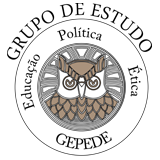

RESUMEN: En este trabajo se procura pensar la relación entre los conceptos pueblo, multitud y movimiento -que ha recobrado interés en el pensamiento político contemporáneo-, a partir de una nota que Hobbes inserta en el capítulo XXII del Leviatán con el propósito de fundamentar la diferenciación jurídico-política de las asambleas del pueblo en legales y tumultuosas. El hiato entre ambas parece tornarse central para configurar la línea fronteriza que separa lo político de lo impolítico, si recurrimos a la terminología que Giorgio Agamben emplea al interpretar la oposición schmittiana entre Movimiento y Pueblo. En la teoría de Carl Schmitt sobre la unidad política del Reich, hay tres conceptos fundamentales: Estado, Pueblo y Movimiento. En la teoría de Hobbes sobre la unidad del poder soberano, los conceptos clave también son tres: Estado, Pueblo y Multitud, pero este último, ligado al concepto de movimiento, es la materia semántico-argumental con la cual se conforman las otras dos categorías, Pueblo y Estado. A partir de allí, la línea demarcatoria entre “lo político” y “lo impolítico”, la legalidad y el tumulto, tenderá a convertirse -hasta nuestros días- en un brumoso campo de batalla político-conceptual.
PALABRAS CLAVE: Pueblo, Multitud, Movimiento, Corporaciones, Tumulto
ABSTRACT: This paper seek to think the relationship between the concepts people, multitude and movement, which has regained interest in the contemporary-political thought, as Hobbes a note inserted in Chapter XXII of Leviathan, in order to support the legal and political differentiation between people‟s legal and tumultuous assemblies. The gap between the two seems central to set the boundary line which separate the political from the unpolitical, to used Giorgio Agamben‟s terminology to interpret the schmittiana opposition between Movement and People. In the Theory of Carl Schmitt on the political unity of the Reich, there are three fundamental concepts: State, People and Movement. In the Theory of Hobbes on the unity of sovereign power, the key concepts are also three: State, People and Multitude. But the latter, linked to the concept of movement, is the semantic-argumentative material with which the other two categories, People and State, are formed. From there, the boundary line between “the political” and “the unpolitical”, legality and tumult, will tend to become to this day, in a political and conceptual misty battlefield.
KEYWORDS: People, Multitude, Movement, Corporations, Tumult.